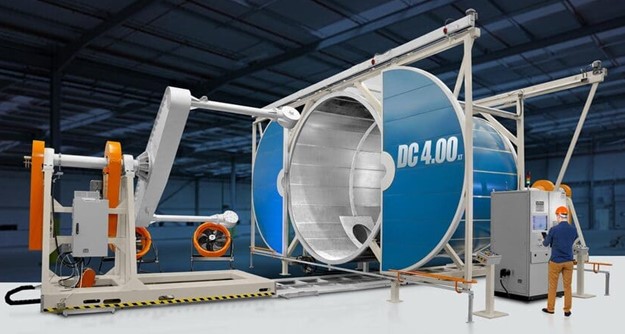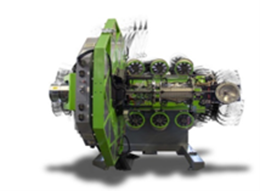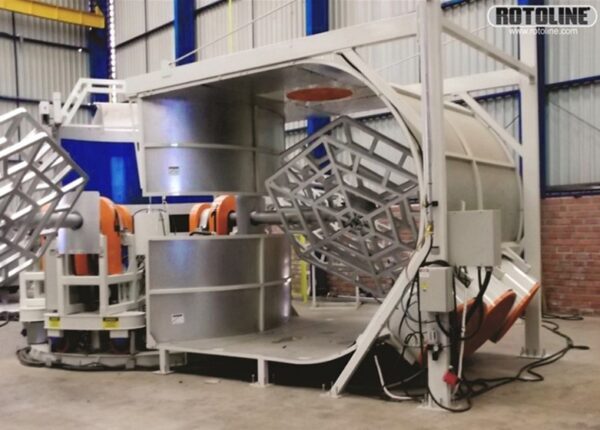Precision and Efficiency: A New Era in Rotomolding Technology

The rotomolding industry is transforming technologically, enabling manufacturers to achieve higher precision, efficiency, and sustainability.
The industry can now produce more complex, durable, and cost-effective products with innovations such as robotic automation, direct heating technologies, and material processing advancements. These advancements reshape how manufacturers produce rotomolded parts and expand the applications of this versatile process.
You can also read: Rotational Molding: Balancing Sustainability and Performance
Companies like Rotoline and Persico design some of the most critical rotomolding machines on the market. Persico’s SMART series is known for its Direct Tool Heating (DTH) technology, which allows for precise mold temperature control, improves energy efficiency, and reduces cycle times.
On the other hand, Rotoline’s Shuttle rotomolding machine is another key player, offering dual stations that allow simultaneous mold use and advanced recipe control, enhancing both flexibility and productivity in manufacturing. These machines are fully automated, supporting a high level of production accuracy.
Enhancing Efficiency with Direct Tool Heating Technologies

Smart H2 Machine for small and proto lines. Taken from Persico
One of the most impactful innovations in roto molding is the use of Direct Tool Heating (DTH) technology. Traditionally, manufacturers heated molds externally using large ovens, which caused uneven heat distribution and longer cycle times.
The Power of Automation and Robotics

Carrossel machine. Taken from Rotoline
Automation is now a cornerstone of rotomolding processes, with robotic arms enhancing precision and reducing human error. The integration of automated systems enables real-time process adjustments, ensuring high-quality, consistent results. These machines also boost production speeds and reduce labor costs, while maintaining repeatability. Rotoline’s Carrossel Machine, for instance, incorporates a central axis from which carts circulate through various stages of the production process, optimizing the sequential production of parts in large volumes.
Pioneering Flexibility and Sustainability
Rotomolding machinery now manages various materials, including recycled and advanced polymers, supporting sustainability initiatives. New machines can use different molds and recipes simultaneously, providing manufacturers with flexibility. Additionally, reinforcements such as fiberglass or Kevlar enhance product durability, expanding the applications of rotomolding to demanding industries like automotive and aerospace.
Looking ahead, the future of rotomolding promises even greater advancements. Advances in material science, enhanced process automation, and the integration of artificial intelligence (AI) will drive breakthroughs, expanding manufacturing possibilities across various industries.
